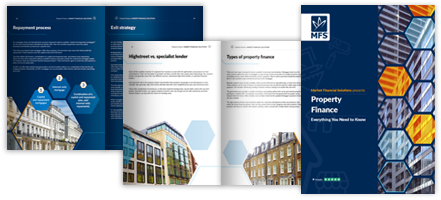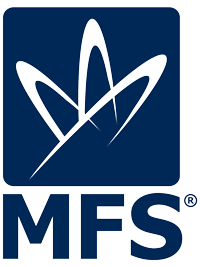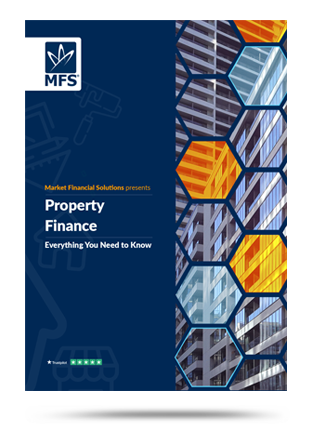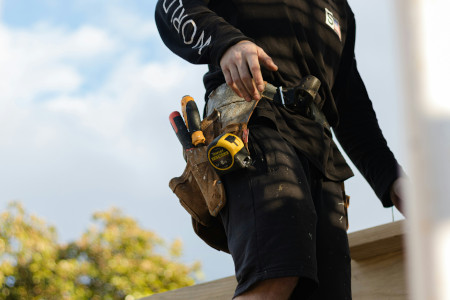Disclaimer
Market Financial Solutions are a bridging loan and buy-to-let mortgage provider, not financial advisors. Therefore, Investors are encouraged to seek professional advice. The information in this content is correct at time of writing.

It sounds made up, but the BRRRR method or strategy is a very real thing in property investing. We need to not only ask does the BRRRR method work, but how does it work?
To start with, let’s detail what the actual acronym stands for. It stands for: buy, rehab, rent, refinance, and repeat. This strategy has its roots (it seems) in America, but it can be utilised by UK property investors.
How Does the BRRRR Method Work? Breaking Down the Steps
The first step of the process involves buying a distressed or undervalued property that has potential to bounce back. It could be found at an auction house, where debilitated properties are often listed, or on the open market.
Once the property is bought, the owner can focus on its rehab. This can involve engaging with refurbishment or renovation works to improve the property’s value and desirability. The works involved can be structural, and/or cosmetic.
When the property is ready, it can then be rented out. With an improved property, owners should hopefully be able to charge higher rents for it, while also receiving plenty of interest from tenants.
From here, borrowers can then focus on refinancing and, specifically, cash-out refinancing. This is a type of refinancing loan that allows owners to tap some of the equity they’ve built up in their asset[1].
Then, they can repeat the process. By utilising their newly acquired funds, they invest in new properties, and repeat the cycle.
Obviously, the success of this strategy will depend on the underlying borrower’s circumstances. If it works for them, it’s more likely to succeed. It will be up to property investors, and their advisors, to determine if this way forward is the right way to go.

How Does it Work in Practice? A Case Scenario
There is no definitive answer to the question of does the BRRRR method work but as a strategy, it does have a lot of things going for it. Given the state of the properties being bought, BRRRR often only requires relatively small investments from the outset, and it’s a strategy that could be scaled quickly.
If it’s executed correctly, it can bring in consistent income for property investors and, over the longer-term, offer a high return on an initial investment. Although, there are some challenges which will need to be factored in.
Refinancing can prove costly, especially in a high-interest rate environment[2]. Moreover, repairs can prove costlier than expected, and passive income isn’t guaranteed in such a competitive market. Also, property investors need to consider regulatory concerns (local laws, planning permissions etc), and be completely up to date on their local market analysis[3].
For a BRRRR method example, UK Property Accountants has a very clear case scenario that makes the process digestible: “Mr. John Cena wants to include some real estate properties to diversify his portfolio. He started looking for property that could be bought at Below Market Value (BMV). He finds the property (after researching and looking for wholesale deals, distressed homes, etc.) which can have increased value after certain repairs. So, he buys the property for £480,000 by taking a mortgage from the lender, which represents the phase ‘BUY’.
After buying, he finalised the list of the repairs that needed to be done just to keep the property at its respective standard. He carried out the repairs and improvements for £40,000 to make the property market-ready for renting which represents the phase ‘REHABILITATE’. So, his total investment amount would be £520,000 (£480,000+£40,000). The After-Repair Value (ARV) was estimated to be £780,000.
Since the property is ready, he has started to look for tenants through agents, online platforms, etc. He gets the number of tenants from those means, and he selects one after the tenant screening process for the monthly rent of £3,200 (annually £38,400), which represents the phase ‘RENT’.
Post-rehabilitation, the property is appraised at the After-Repair Value (ARV). Hence, he refinances, securing a mortgage of £585,000 (75% of the ARV), which represents the phase ‘REFINANCE’. He pays back the lender (previous mortgage provider) with the relevant interest on the amount taken. Also, he recaptures the renovation cost from the bank loan.
With the recaptured capital (new refinanced amount left after paying back the lender), he repeats the BRRRR process, acquiring another property and continuing the cycle the same way. Since he has returned the lender’s money in time with interest, the lender will be interested in doing more deals, so he can take a further mortgage for another property acquisition and repeat the cycle the same way, which represents the phase ‘REPEAT’.”
Does the BRRRR Method Work Similarly to House Flipping, or is it the Same Thing?
The BRRRR method may sound familiar to some property investors. It seems, at first glance, to be a more robust way of describing a fix-and-flipping strategy. But, there is one clear differentiator between the two.
House flipping is more for property sellers. Here, an undervalued home is bought, fixed up, and then sold on for a profit. Whereas BRRRR is more for landlords. With this route, a home is invested in to ultimately be rented out to tenants, rather than sold on.
Also, the BRRRR method is likely to be longer than a flipping strategy, given the additional steps involved. It may also be the case that a house flipping plan evolves into the BRRRR method, should investors struggle to find buyers for their newly upgraded property, and instead need to find tenants for it.
Does the BRRRR Method Work for You and How Can Specialist Finance Help?
Property investors may find that the BRRRR method sounds appealing, and certainly fits in with their circumstances. But, they may be hesitant to act, without knowing broadly how well these plans tend to pan out.
While it’s tricky to find quantifiable data on this, there have been a few notable success stories. Some have been able to build “property empires[4]” via BRRRR.
Fortunately, should property investors want to engage, the specialist finance market has plenty of tools at its disposal to assist. At Market Financial Solutions, we have a range of acquisition loans that can allow borrowers to jump on an opportunity, including auction bridging finance.
We also have bespoke refinancing funding available, and refurbishment capital that can be put towards upgrading a property. We’re ready to discuss how we may be able to help with answering the question of does the BRRRR method work.
The Complete Guide to
Property Finance
Everything you need to know
- Foundation & different finance types
- Useful tools
- Apply them in real life
- Market insights & more
[1] https://www.experian.com/blogs/ask-experian/what-is-a-cash-out-refinance/
[2] https://ifamagazine.com/69-of-uk-mortgage-brokers-expect-base-rate-to-rise/
[3] https://www.ukpropertyaccountants.co.uk/master-the-brrrr-method-for-uk-property-market-success/
[4] https://www.telegraph.co.uk/money/property/buy-to-let/how-build-property-empire-using-someone-else-money/





